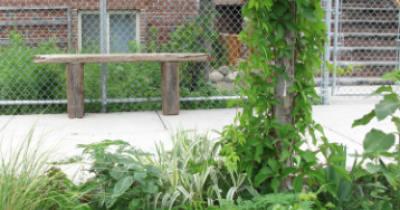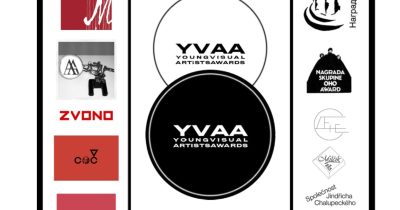Exhibitions
15 March 2017 – 19 June 2017
from 11 a.m. to 9 p.m.
Digital technologies have revolutionized design and production, transforming the practice of architects, designers and artists. What is the status of the author-creator in the age of non-standard production and its unique but industrially manufactured objects? What is the status of the 3D-printed object, simultaneously everyday object, technological product, work of art, designer item, and architectural prototype? How come the digital age has seen it spread to every field of production? Described as a disruptive technology, 3D printing has become widely diffused over the last decade and a half, thanks open-source-software-based platforms, adopted throughout industry from aeronautics to biotechnology.
The origins of 3D printing go back to the photo-sculpture invented by François Willème in around 1860 – a first attempt at 3D photographic reproduction – and to Joseph E. Blanther’s relief maps in the late 19th century. In the 1960s, the advent of IT, digitally controlled machines and automation opened up a new, digital territory. The United States saw the development of a distinctive subculture, with “hackers” and “makers” developing a collaborative economy that combined artisanal ethos with digital technology. It was in the 1980s that the first object was printed by means of additive technology (stereo-lithography). At the turn of the millennium, new software enabled digital modelling in 3D. Today, designers and architects work on programming languages and are directly involved in production.
From the designer object to architectural prototype, from the production shop to innovative research projects, this exhibition brings together a younger generation of artists, designers and architects who make use of 3D printing as an analytical and experimental tool. In its selection of some thirty “creators”, Imprimer le monde[Printing the World] reveals the transformation of forms within a “digital materiality” that has given birth to a new typology of objects having 3D printing in common.
Modes of representation in the digital age stand at the heart of reflections on the status of the image (Achraf Touloub, Jon Rafman). 3D printing has led to the creation of a new type of artefact combining craft skills and digital technologies. The designer Joris Laarman is shortly to install in Amsterdam the first bridge in 3D-printed metal. Mathias Bengtsson has designed the first additively manufactured table in titanium whose complex forms draw inspiration from natural evolutionary processes. Dirk Vander Kooij uses thread of recycled plastic for his design pieces. Architects too have adopted these technologies, developing new construction processes for the production of prototypes or furnishings. From micro (the printing of living cells) to macro (the printing of full-size buildings), additive manufacturing is not only revolutionising science and industry but raising profound questions about the status of the finished object.
How can space be reinterpreted or recomposed through music? The installations that Ircam has created for the exhibition effect the simulation of sound space in 3D. In Disenchanted Islands, the composer Olga Neuwirth takes the visitor on a virtual journey to Venice, site of the first performance of Luigi Nono’s Prometeo with a set by Renzo Piano. By means of 3D convolution, the sound print of the Venetian church is brought into the museum. For Jardin d’Éden, artists Raphael Thibault and Hyun-Hwa Cho have conceived an immersive installation in the form of a double video screening, 3D printed sculptures and a panorama in sound and music. Here the spatialisation of the sounds is governed by the images.
Artists: Additivism (Morehshin Allahyari et Daniel Rourke) ; Aleksa Studio (Aleksandrina Rizova); Alisa Andrasek (Biothing) ; Aldo Bakker ; Mathias Bengtsson ; Henriette Bier et Sina Mostafavi ; Erwan et Ronan Bouroullec ; François Brument et Sonia Laugier, Ammar Eloueini ; Thibault Brunet ; Heather Dewey-Hagborg ; Dong Lin et Chi Zhou ; Goliath Dyèvre et Grégory Chatonsky ; Hyun-hwa Cho et Raphaël Thibault ; Jean-Baptiste Fastrez ; Vincent Fournier ; Laureline Galliot ; Dov Ganchrow et Ami Drach ; Gramazio Kohler Research ; Michael Hansmeyer et Benjamin Dillenburger ; Brian Harms ; Jesse Howard ; Hiroshi Ishii, Lining Yao, Jifei Ou (Tangible Media Group, MIT) ; Joris Laarman ; Achim Menges ; EZCT Architecture & Design Research (Philippe Morel : EZCT / XtreeE ; Felix Agid) ; Nendo (Oki Sato) ; Nervous System (Jessica Rosenkrantz et Jesse Louis-Rosenberg) ; Olga Neuwirth ; Neri Oxman ; Matthew Plummer-Fernandez ; Jon Rafman ; Gilles Retsin et Manuel Jiménez García ; Jenny Sabin ; Neta Soreq ; Studio A2 et New North Press ; Studio Swine (Azusa Murakami et Alexander Groves) ; Skylar Tibbits et Christophe Guberan (Self-assembly Lab, MIT) ; Achraf Touloub ; Unfold (Claire Warnier et Dries Verbruggen) ; University of Tokyo Advanced Design Studies Unit (Yusuke Obuchi, Kengo Kuma, Jun Sato, Kevin Clement, Anders Rod) ; Lilian van Daal ; Olivier Van Herpt ; Dirk Vander Kooij ; Woody Vasulka ; Daniel Widrig ; Hongtao Zhou.
Curator : Mnam/Cci, Marie-Ange Brayer, Olivier Zeitoun




